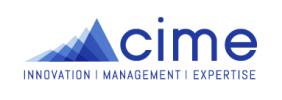Executive summary in english
18 Dec 2022
Cahier n°4 : Organizing spaces and ambiances for creativity in R&D
Despite advances in creativity research, the role of ambience in the creative process has not been studied in depth. This multidisciplinary (management-design) based research shows that creative processes are stimulated by physical and organizational settings. Based on four case studies (SoundLab, Atome, Galaxie and Panter), in situ observations, and 51 semi structured interviews with knowledge and creative workers in R&D focused organizations in France, this study shows that the relationship between ambiences and creativity is complex and relies on two key factors: attention and affect.
Firstly, some physical environments can be attention stealers. Organizational settings, if perceived as negative, can lead to lack of attention, and sometimes fixation. Fixation refers to the lack of successful completion of various cognitive activities such as memory, problem solving and creative thinking. This may be due, for example, to a physical ambience where individuals are exposed to repetitive noise and a daily setting with high levels of tension, hindering imagination and creativity.
Secondly, affective states are an important factor in determining creativity. Even though ambiances are difficult to describe, the affective tone of a space can contribute (or not) to personal well-being. For example, experiencing a stressful organisational setting reduces the overall well-being of employees. Indeed, ambience can have a strong influence on people’s mental state and emotions, as well as the way employees collaborate, interact and, consequently, experience the creative process both individually and in a group context.
This study further highlights that the scale and location of the workspace are determining factors to better understand creative patterns and having a diverse range of “spaces” available is key to stimulating creative thinking. They can ensure that people have some freedom of movement, a change of posture, all of which are beneficial for creativity. Indeed, the bodily dimension at work and how and where employees interact socially can influence innovative thinking. In line with this last point, this study also shows that telework can be a hindrance to group creativity and performance.
From these findings, the study proposes the following practices to ensure greater creativity and innovation in organizations:
- Promoting “networked” research spaces and creating “intermediate spaces”
- Rethinking telework in relation to the activity, project life cycle and carbon footprint
- Developing multi-use spaces, giving employees freedom on how and when to use them
- Improving the quality of the reception area
- Designing renewable mediation and communication tools
- Paying attention to temperature, light and acoustics
- Avoiding uniformity of ambiances through standardized equipment
- Systematically carrying out usage diagnostics and experiments
